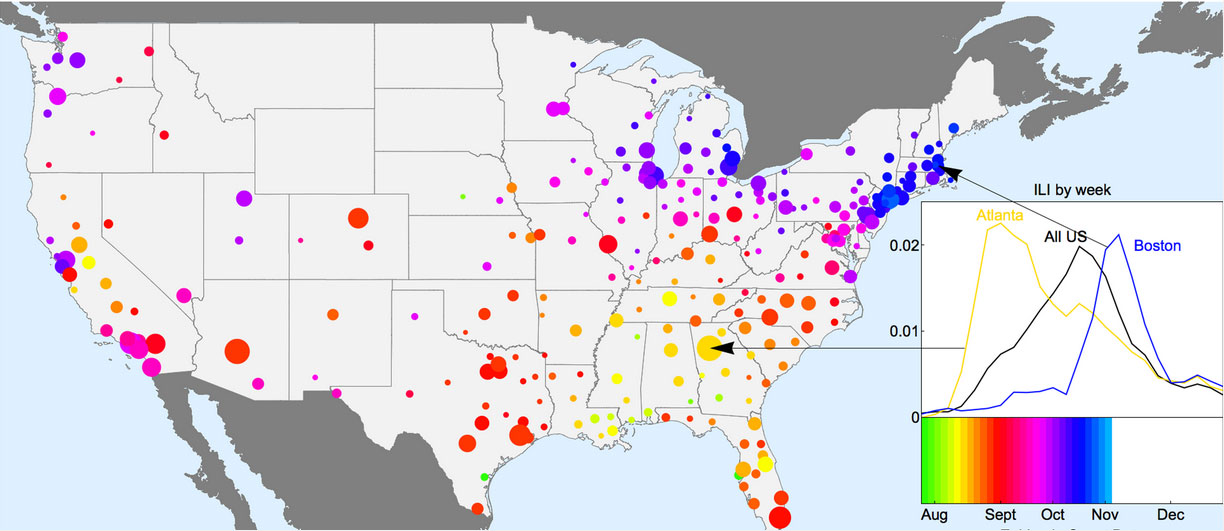Path of a Pandemic: Map Shows How H1N1 Swine Flu Spread

A new map shows the path of H1N1 "swine flu" as it spread across the United States in the fall of 2009, when the brunt of the pandemic hit the country.
The map is based on reported visits to the doctor for flulike illnessin 271 U.S. cities in the late summer and fall of 2009 (when visits for other respiratory illnesses are typically low).
Although there had been some H1N1 transmission in the spring of that year, the outbreak did not become widespread in the U.S. until the fall, the researchers said. This "fall wave" started in the Southeast — in Alabama and Georgia — and then radiated outward, taking about three months to spread across the entire country. States in the Northeast, such as New York and Massachusetts, were the last to be hit. [6 Flu Vaccine Myths]
Interestingly, the study found that the disease mainly spread over short distances, between areas that were very close to each other.
"It is remarkable that the main 2009 pandemic wave — set in an era of intense air traffic and regional ground transportation — showed such a short-range mode of spread," the researchers wrote in the June 12 issue of the journal PLOS Computational Biology.
One reason for this could be that children were a predominant source of infection, and kids don't usually travel long distances as often as adults do, the researchers said.Another factor that appears to have helped fuel flu transmission was the fact that schools opened in the fall, the researchers said.
"The findings underline the critical role that school-age children play in facilitating the geographic spread of pandemic influenza," the researchers said.
Sign up for the Live Science daily newsletter now
Get the world’s most fascinating discoveries delivered straight to your inbox.
Follow Rachael Rettner @RachaelRettner. Follow Live Science @livescience, Facebook & Google+. Original article on Live Science.

Rachael is a Live Science contributor, and was a former channel editor and senior writer for Live Science between 2010 and 2022. She has a master's degree in journalism from New York University's Science, Health and Environmental Reporting Program. She also holds a B.S. in molecular biology and an M.S. in biology from the University of California, San Diego. Her work has appeared in Scienceline, The Washington Post and Scientific American.










